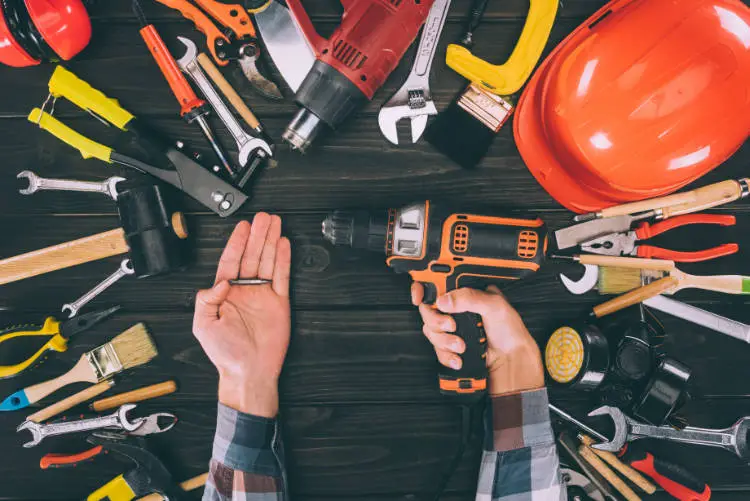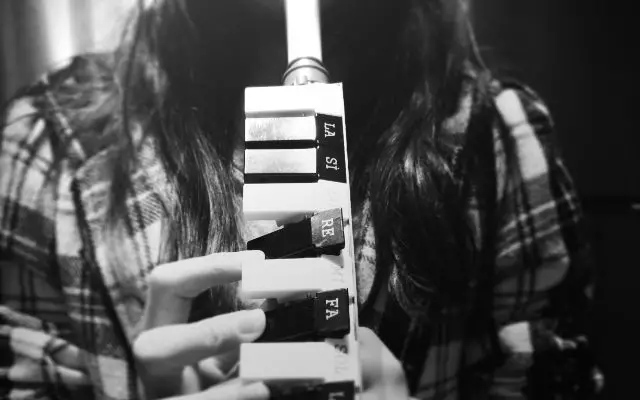Taking care of your melodica is extremely important to the life of your instrument. Instruments only perform well when they’re in good working condition and tuned properly. Not only will good melodica care and maintenance ensure that your melodica sounds great, but it will also extend the instrument’s life. Luckily, only a couple of small tools and some attention are all you really need.
Storing Your Melodica
Hard cases vs soft cases
Always keep your melodica in a case or box when you’re not using it. This will protect it from dust, dirt, pets, or your kids. And just for the record, every kid should play a melodica at some point. We even wrote up a list of great melodicas for kids. Just make sure that you keep yours safe, especially if it’s anything like a professional level melodica. Many melodicas come with a soft carrying case that’s good for easy transport and will help keep it clean. You might also consider getting a hard case as this will offer even more protection against damage.
The weather and environment
Melodicas are particularly sensitive to temperature changes and moisture. Cold or wet weather can have an adverse effect on the reeds, possibly causing condensation which will affect the sound and shorten their life. Keeping your melodica in a warm, dry place and letting it adjust for a while to the outside environment before playing will help tremendously. Never leave your melodica in a hot car or anywhere the temperature might exceed 100 degrees, as this could literally melt the instrument.
Some of the articles on our site contain affiliate links. We're careful about what we review and recommend. As an Amazon Associate, we may earn something small from qualifying purchases. Thanks for the support!
Emptying a melodica
Because the melodica is a reed instrument played by blowing air into it, moisture will naturally build up inside and periodically need to be removed. Yep, you gotta empty the spit. We recommend that you get into the habit of doing this every time you’re done playing.
To empty your melodica, simply open the moisture vent which is usually located at the end of the melodica, and either blow through the mouthpiece (without pressing the keys) or shake the instrument vertically up and down until the moisture is completely out. Also, if you use an air tube, be sure to regularly shake out any moisture built up inside of it, and wash it in warm water and mild soap from time to time.
Tuning your melodica
The good news is that melodicas generally need less tuning than most other free-reed instruments. The bad news is that some melodicas have tuning issues right off the bat. Tuning a melodica is not quite as easy and straightforward as a guitar or a bass. Many people who play melodica will never tune it and aren’t that concerned with a slight variation in pitches across the keyboard. It’s completely up to you, but we recommend that you learn how to tune a melodica as eventually, like with most instruments, you will have to tune it.
Another thing to note is that melodicas are often tuned slightly sharp in pitch on purpose. This is because as you blow into the mouthpiece and force air over the reeds, their pitch can flatten out the harder you blow. The tuning of your own instrument ends up being a pretty personal decision. The more comfortable you can get with tuning it, the more you’ll enjoy the sound.
Warning: the next few sections might get a bit technical. If you’re interested in things like tuning and pitch, read on! If not, just take your melodica in to a reputable local music store for tuning and cleaning, and skip the section on tuning. We won’t be insulted.
Melodica Tuners
The first thing you’ll need is a tuner. We highly recommend a digital tuner or a strobe tuner as they are the most accurate and easy to use. However, you can also find tuners online that are easier and easier to use these days. You can always start with an online tuner and see what kind of results you get. Here are a couple to check out:
Flutetunes.com (This one shows how many cents off you are pretty easily)
The primary thing to understand when tuning a melodica is the concept of relative pitch. The idea is not to get the instrument in perfect tune, which can be next to impossible, but to tune the keys so they are correctly pitched when compared to each other.
The best way to do this is to first determine the relative pitch of your melodica. Using the tuner, figure out what pitch the majority of the keys are in. If most of the keys are a little sharp (5 or 10 cents sharp for instance), then it’s much easier to adjust the few that are outside of that range rather than changing most of the keys to match the couple that
Understanding pitch on a melodica
For instance, we measure tuning in cents as you may have noticed. 100 cents is the distance between two keys on a piano that are next to each other. So, one semi-tone is 100 cents. Most people can’t hear “out of tune” until you hit 30 cents or so flat or sharp. Staying within 10 or 15 cents of the note you’re tuning to, C for instance, will still sound fine, especially if all of the other notes are the same amount sharp or flat.
Melodicas are physical things that react to the elements. If you have amazing ears, you may even hear a slight difference in pitch on a hot day vs a really cold day. You should be listening to the instrument as a whole. When you start to hear specific keys standing out too much, that’s when it’s time to break open the body and tune a reed.
Accessing the reeds on a melodica
The next step is to prepare the melodica for tuning. Using tape, mark the keys you want to tune. Later, when you have the melodica open, you’ll mark the matching reeds as well. This makes it much easier to keep track of what you’re doing and prevents you from accidentally re-tuning a good key.
You’re now ready to open the melodica to access the reeds. Place the instrument face down on a clean table. You may want to use a towel or cloth underneath to prevent scratching. Unscrew the back of the instrument being careful to note which screws go where (some melodicas have different sized screws). Once the back is off, you’ll have access to the reeds on most models; however, some melodicas may require that you remove more items to get to the reeds.
Melodica Tuning Tools
Alert: this step requires using small, possibly sharp tools. If you’re not comfortable with this, you should take your melodica in to be tuned by a professional. We’re not responsible for any damage to your melodica or your fingers.
Tuning the melodica involves filing the reeds to change their pitch. The best tools for the job are small curved files. Flat files are much harder to use. Most hobby shops and some hardware stores will carry these curved files. Some reeds can also be filed carefully with a small knife or other sharp tool, but be extremely careful if you try this method. You can damage the reed or yourself if you aren’t very careful.
To lower or flatten the pitch, file or scrape a very small amount of material from the back of the reed. To raise or sharpen the pitch, file or scrape from the front of the reed. Keep in mind that the closer you file to the ends of the reeds, the stronger the change in pitch will be.
You can test the pitch by either plucking the reed with the tuner held close or by gently blowing over the reed. It’s better to make small adjustments and work your way to the desired pitch than to make large ones and file too much. File gently and take your time. You can always file more. You can’t add material back on to a reed.
Putting it back together
Once you think you have the reeds all tuned correctly, go ahead and get everything back together and the screws gently tightened down. Just go in the reverse order of how you took the melodica apart.
Once you have it back together, go through and test all of the keys again. You may have to go through this process several times before you get the tuning you want. Don’t rush it. You’ll get faster the more you do it, but going slowly and deliberately will help you avoid breaking something and possibly ruining your melodica reeds.
Replacing your melodica reeds
So, you went a bit too hard on the tuning and ruined a reed or two, huh? Well, if you have a newer Hohner or Hammond Suzuki, you may be able to find replacement reed plates from the manufacturer of your melodica.
If you can’t find new reed plates through the manufacturer, I would suggest taking a look around the internet to see if you can find a replacement set on Amazon, Musicians Friend, or eBay.
Some people even purchase old or broken models identical to their own to use as replacement parts. Just make sure that the reed plate is in tact if that’s what you need.
Melodica care and maintenance – wrap-up
If you exercise good
Aside from the technical stuff, basic melodica care and maintenance is mostly good sense. Keep it safe, dry, and at a reasonable temperature. Clean it now and then, and empty the spit valve.
A couple of other notes that we came across from melodica players around the web had to do with not eating right before playing
Overall, take good care of your melodica, enjoy playing, and it should last you many years.





HI,
Saw Jon Batiste play and had to have one. I haven’t played a wind instrument since junior high school. I’ve been playing mountain dulcimer for almost 17 years and I’m looking for a good challenge. I bought a Hammond HP 44 and it arrived just after Christmas.
Regards,
Jerry
p.s.
I like your website and I’ll be back, I’m looking forward to seeing your news letter.
Hey Jerry,
Sorry it’s taken so long to get to this comment. Love that you saw him and were inspired to pick up the melodica. I’d also really love to know how you’ve gotten on with the 44HP…great instrument.
I’m actually pretty interested in dulcimers myself. I can definitely geek out on musical instruments of all kinds.
How do you like the Hammond?
Is it possible to convert/adapt an older version of an Melodica to a new version?
Hi Joseph,
Not sure what you mean by convert to a new version, but since these are actual physical instruments you could make improvements on them, such as upgrading keys or reeds, but they’ll still be the instrument they started as to some point. You could modify one so much that it doesn’t really resemble the original all that much, and I’m sure many people have done that.
Hi! I’m playing Trad Jazz (AKA Dixieland) on a Hohner Fire Melodica. My group is playing a 2 hour gig weekly outdoors. I’m finding that sometimes notes will not sound after I’ve played a few tunes. I’m thinking this is due to condensation and that I’m not clearing the moisture frequently enough. Should I blow empty after every tune? How often should I take apart and clean? Weekly? Monthly? I’m thinking about upgrading to a pro model. What would you suggest?
Thanks, Anne Brady
Your website is a great resource!!
Hey Anne,
This is awesome! Let us know if you have any links of live performances.
You can definitely try clearing your melodica more often if you think it might help. You’ll probably notice a change in sound if you are running into issues with excessive amounts of moisture building up. You might also notice a change in how much airflow is required to produce notes.
Notes dropping out could be a couple of different things, including problems with your reed plate or the case itself not being properly sealed. Pay attention to which notes are dropping out. If it’s the same note or notes all the time, you might have a reed issue. You can open the case very carefully and just have a quick look at the reeds and see if any are blocked or bent. Just be very careful not to lose any screws, and make sure the case is seated properly when you put it back together.
Cleaning has to do almost entirely with how much you play. If you’re playing (practicing or otherwise) daily, then you might want to give it a light cleaning once a month and see if that’s enough. You shouldn’t really need to open it up all that often unless you play constantly.
Upgrading can be loads of fun!! Check out our review of professional melodicas. I’d recommend the Suzuki or the Yamaha. Listen to them both to get a sense of the sound you want.
Hope that helps!